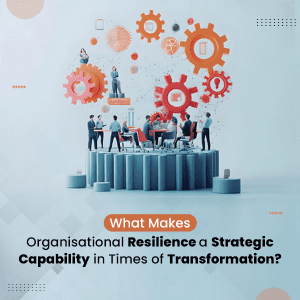
Though organisational change causes a great deal of fear in the workplace, constant transformation is now a key component of any organization’s strategy, no matter how big or small. While the discipline of change management focuses on mobilizing people to deliver expected results and outcomes, project management focuses on technical processes and systems and how results can be delivered within set timelines and budgets by establishing required guardrails.
When executing new initiatives and projects, many business leaders rely on both change managers and project managers to ensure success. These professionals use their organization, communication, and leadership skills to support their co-workers and help their company in achieving business objectives. These objectives range from increased employee retention and productivity to improved work quality and customer value.
This brings us to the importance of integrating the disciplines of change management and project management as both contribute to the success of an organizational project or initiative. By integrating these disciplines; from the initiation of the project through to completion, we connect the people’s side and technical side of the change and ensure that the organizational benefits of the change are realized. Think of two strands of coloured rope as a good illustration for comprehending the unified value proposition. The technical and interpersonal aspects of a change are represented by a strand of rope, respectively. The rope will be stronger if the two strands are intertwined. Similarly, if those responsible for dealing with the technical and human aspects of change collaborate effectively, they will deliver a change that is more successful.
Because each discipline focuses on different aspects of a project (and ultimately its success), both project management and change management should work in tandem to ensure a project’s intended outcomes and broader organizational success. Some of the intended benefits include:
- Shared objectives improve the organization’s performance by successfully implementing a change that delivers the intended results and outcomes.
- Proactively identify and mitigate risks, anticipate and address obstacles and resistance, and build commitment to the change.
- Better sequencing and alignment ensuring the right actions can be taken at the right times in the project lifecycle to ensure people are ready to adopt the change and produce successful outcomes.
- Enhanced information exchange to ensure that the project team receives effective feedback on the adoption, usage, and functionality of the solution being implemented.
Change is never simple, especially when adjusting to new technologies and processes. Integrated management offers the solution to keep everyone on board with the project’s direction and the schedule along with the established milestones and objectives.
Project managers can utilise this input to adjust their strategies and enhance results by working with change managers who make sure project management teams are aware of how people are responding to the changes. Repeatable procedures and predictable results are the ultimate goal. Companies may accomplish goals and get more value faster and better by managing projects and the people involved in them efficiently.






